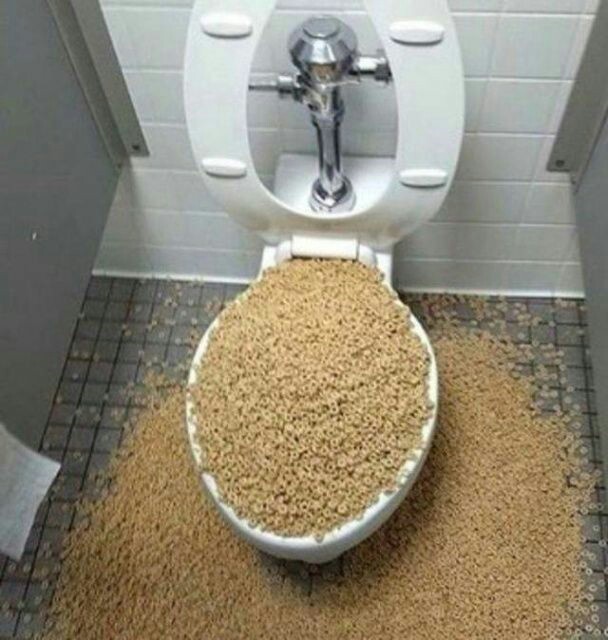Are You Permitted to Flush Food Down the Toilet?
Are You Permitted to Flush Food Down the Toilet?
Blog Article
What're your beliefs on Think Twice Before Flushing Food Down Your Toilet?

Introduction
Many people are often confronted with the issue of what to do with food waste, particularly when it pertains to leftovers or scraps. One typical question that emerges is whether it's fine to flush food down the commode. In this short article, we'll delve into the reasons people may consider purging food, the repercussions of doing so, and alternative techniques for correct disposal.
Reasons individuals might think about purging food
Absence of understanding
Some people may not recognize the potential harm brought on by purging food down the bathroom. They may incorrectly believe that it's a safe technique.
Comfort
Flushing food down the toilet might appear like a fast and easy solution to taking care of undesirable scraps, particularly when there's no neighboring trash can available.
Idleness
Sometimes, individuals may merely select to flush food out of sheer negligence, without considering the repercussions of their actions.
Effects of flushing food down the toilet
Ecological influence
Food waste that winds up in rivers can add to air pollution and harm aquatic ecological communities. Additionally, the water utilized to flush food can strain water sources.
Plumbing issues
Purging food can result in clogged up pipes and drains pipes, causing pricey plumbing repairs and troubles.
Types of food that must not be purged
Fibrous foods
Foods with fibrous structures such as celery or corn husks can obtain entangled in pipes and cause blockages.
Starchy foods
Starchy foods like pasta and rice can soak up water and swell, bring about obstructions in pipelines.
Oils and fats
Greasy foods like bacon or food preparation oils need to never ever be purged down the commode as they can strengthen and create clogs.
Correct disposal approaches for food waste
Making use of a garbage disposal
For homes geared up with garbage disposals, food scraps can be ground up and flushed through the pipes system. Nonetheless, not all foods are suitable for disposal in this manner.
Recycling
Certain food product packaging materials can be recycled, decreasing waste and minimizing ecological effect.
Composting
Composting is an environment-friendly way to dispose of food waste. Organic products can be composted and used to improve soil for gardening.
The relevance of proper waste monitoring
Decreasing ecological harm
Proper waste administration techniques, such as composting and recycling, help lessen air pollution and maintain natural resources for future generations.
Safeguarding pipes systems
By staying clear of the technique of flushing food down the commode, house owners can stop pricey pipes fixings and keep the honesty of their pipes systems.
Verdict
Finally, while it might be alluring to purge food down the bathroom for comfort, it is necessary to recognize the possible repercussions of this action. By embracing correct waste administration methods and disposing of food waste sensibly, people can contribute to healthier plumbing systems and a cleaner atmosphere for all.
FLUSH FOOD DOWN THE TOILET?
FLUSHING FOOD CAN CAUSE BLOCKED DRAINS IN YOUR HOME
All of the plumbing fixtures in your home are connected to the same sewer pipe outside of your home. This outdoor sewer pipe is responsible for transporting all the wastewater from your home to the Council sewer mains. Even small pieces of food that go down the kitchen sink can cause problems for your sewer. It should therefore be obvious that flushing larger bits of food, such as meat, risks a clog in either the toilet itself or the sewer pipes. Flushing greasy food is even more problematic because oil coagulates when it cools, coating the interior lining of your pipes.
THE TOILET IS NOT A BIN
Food isn’t the only thing that people shouldn’t be flushing down the toilet. People use the toilet to dispose of all kinds of things such as tampons, makeup wipes, dental floss, kitty litter and even underwear. Water goes to great lengths to educate residents about the high costs and stress placed on wastewater treatment systems simply from people flushing the wrong stuff down the toilet. It costs taxpayers millions of dollars each year, and homeowners thousands in blocked drain repairs.
FLUSHING FOOD IS A WASTE OF WATER
Flushing food is a waste of our most precious resource - water. In June this year Level 1 water restrictions were introduced to protect water supply from drought conditions. Much of New South Wales continues to be affected by prolonged drought with recent figures revealing up to 97 per cent of the state remains in drought. Depending on whether you have a single or dual flush toilet, every single flush uses between five and 11 litres of water. In the current climate this is a huge amount of water to be wasting on flushing food that should be placed in the bin (or better yet, the compost).
https://www.jabplumbingsolutions.com.au/blog/can-you-flush-food-down-the-toilet

I'm just very fascinated by What Can Happen If You Flush Food Down the Toilet? and I hope you liked our blog entry. For those who liked our blog post if you please don't forget to share it. I take joy in reading our article about Is it safe to flush food (especially rice) down the toilet?.
Call Today Report this page